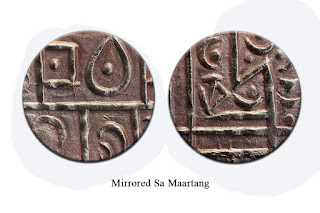Sometimes I wonder if I am doing any good at all - most of what I write tend to be critical - giving the impression that there is nothing quite right about Bhutan and the Bhutanese people. This is ofcourse not true - no single society is so bad.
But people do tend to confuse about being critical as being negative - some through ignorance and yet others, sadly, premeditated - for personal gain and false fame. Luckily, there are those who know that only those who care enough has the courage to be critical - those who do not care - they let it pass because, in their reckoning, being critical does not translate to money into their pockets.
I too pine to put out positive and heartwarming stories - stories that tell of care, mindfulness, of service and dedication - of love for the King and country and passion for their wellbeing. Stories of broken promises and dashed dreams do not give hope and encouragement - they permeate a sense of hopelessness and doom - not the intended message.
And, sure enough, recently I heard a story that is so heartwarming and positive - so enthralling and progressive - that I need to narrate it to others so that people may draw inspiration from it - on how to be tolerant, open minded, and accommodative.
A friend from Sweden, on his latest trip to Bhutan which is his 10th, narrated to me his following humbling personal experience.
It was during his 7th trip some years back, that he decided to go on a morning jog to Taktsang Monastery - he is a Judoka and likes to keep himself fit. Upon reaching Taktsang, he decided that he wanted to see what it was like inside the Monastery’s temples.
Taktsang - the abode of an enlightened monk!
He was dressed in his jogging sneakers and shorts - so the monk at the temple gate denied him entry, for the reason that he was inappropriately dressed. He was a little disappointed but decided to turn back and start his return jog to Paro. But the monk stopped him - he gesticulated:
“Hold on …. wait here a minute … I will be right back.”
After a while the monk returned, clutching a full set of woman’s clothing comprising of: Kira, Wonju, Kera, Koma and Toego. Without much ado …. the monk proceeded to wrap him up - and ushered him into the sanctum sanctorum of the temples - prim and proper - dressed up as a blonde-haired Bhutanese woman!
Inside, he saw rows upon rows of chanting monks - sheepishly giggling at him and his appearance in an uncommon attire.
But what mattered was that he was able to gain entry to one of Buddhist world’s most revered religious sites - even if dressed as a woman. Even more important, he had unknowingly stumbled upon a novitiate monk with that rare liberated mind, unbound by dogma and rigid cultural and religious tyranny - a rarity!
A priceless experience, and a lesson of a life time!


































